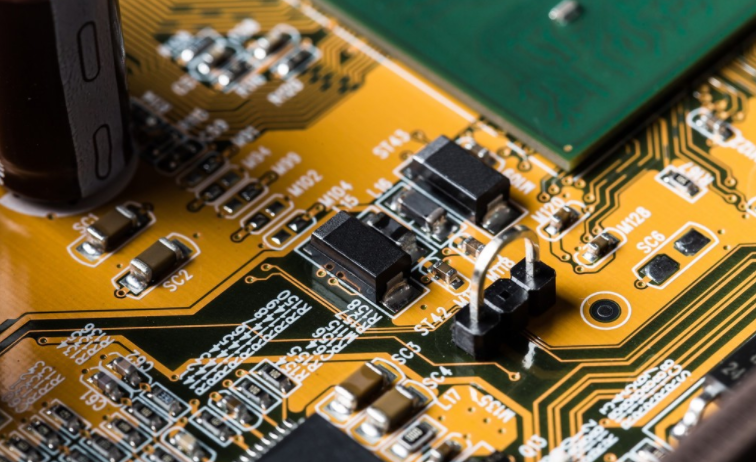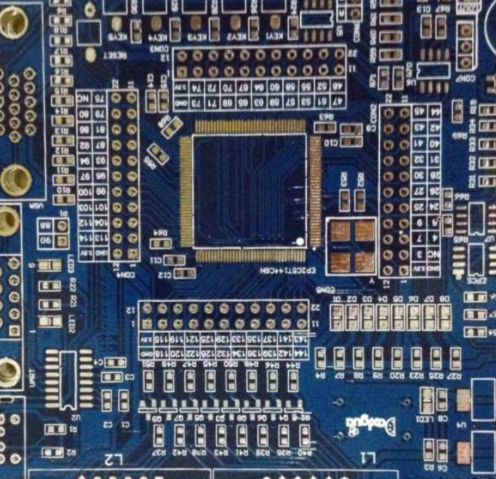
What are the technological advantages of SMT?
PCB surface mounting technology
Surface mount technology (SMT) has added the benefits of manufacturing circuit boards and reduced weight for many reasons:
Components are placed directly on the surface of the circuit board rather than connected through holes in the circuit board (through-hole technology). Many surface mount devices (commonly referred to as surface mount devices or SMDs) are smaller and lighter than their counterparts, partly because of the reduction or elimination of leads required for through-hole manufacturing. Through the standardization of components and design tools, manufacturing automation can be achieved to a large extent.
SMT originated in the 1960s, when IBM used this method to design minicomputers and then used them in the guidance system of the Saturn rocket space program. Since then, this concept has been continuously improved.
SMT Advantages
Circuit board
 Surface mount technology allows engineers to design circuit boards with components on both sides of the board data. By eliminating or reducing the need for drilling holes and component holes, the placement of circuit components is unrestricted.
Surface mount technology allows engineers to design circuit boards with components on both sides of the board data. By eliminating or reducing the need for drilling holes and component holes, the placement of circuit components is unrestricted.
Design flexibility is another advantage of SMT structure There is no conflict between combining SMT and through-hole manufacturing method on the same circuit board This allows PCB designers to create special circuits freely, without requiring multiple circuit boards, but only providing the required functions
Other unique advantages of SMT PCB:
The reduced component size is equivalent to containing more components on a single circuit board, and subsequent products need fewer circuit boards. With today's demand for miniaturized products and weight reduction, these are critical.
For double-sided installation, it is unnecessary to design drill holes and connecting plates, and components can be placed on both sides of PCB.
Quality - Manufacturing processes that place components and perform welding functions can actually improve placement reliability. The surface tension of the welding function actually corrects minor alignment problems and improves placement tolerances.
Reliability SMT connections are not susceptible to failure or vibration due to vibration.
Manufacturing speed Especially when designing circuits and adhering to design for manufacturing (DFM), SMT improves productivity and reduces installation time by eliminating or reducing drilling operations.
Cost reduction Many smaller surface mount devices (SMDs) or components are actually cheaper than larger through-hole versions.
SMT Disadvantages
SMT technology is not without disadvantages:
The connection SMT does not work under mechanical stress conditions, such as when physical connections are frequently connected and separated.
Due to the nature of SMT, the joint size is smaller, which makes it easier for smaller components. This results in less solder used in each contact, which may affect the reliability of some solder joints.
In high-power applications, large components such as fuses, large capacitors or large connectors are needed in circuits. SMT is not the best solution for PCB manufacturing. In this case, the practical method is usually to combine the use of surface mount technology with the through-hole design of larger components (such as transformers or transistors) that need to consider radiators. In fact, such larger devices are sometimes combined on the same circuit board, but are manufactured using through holes.
Prototyping This is unlikely to be an effective application of surface mount technology. If components need to be added or replaced, professional tools and skills may be required, especially when the circuit board is composed of high-density component placement.
SMT in use
Surface mount structure is regarded as the main design and manufacturing standard of electronic equipment. Take a closer look at almost all consumer goods, cars or computers, and you will find that SMT boards are widely used. With its advantages of reliability, light weight, size reduction and manufacturing cost, SMT boards can be used in any situation where reliable and mass PCB manufacturing is required.
Design for Manufacturing (DFM) software tools provide circuit designers with SMT component placement guidelines, which can improve manufacturing efficiency and reduce the possibility of designs that cannot be actually manufactured. This reduces the need for rework and redesign of complex circuits, thereby saving time and money.
Most SMD industry standards further simplify design and manufacturing considerations to coordinate work and stabilize the production of high-quality PCBs, effectively using automated manufacturing processes and equipment







